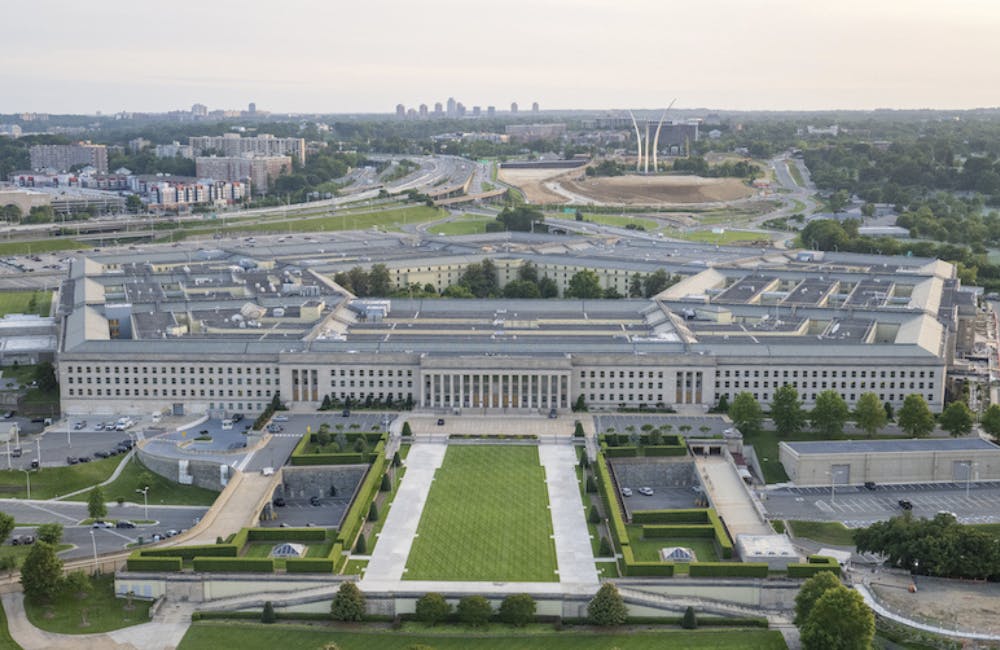Navy Research Leads Push for Tech Innovation to Stay Ahead
The Naval Research Laboratory is driving innovation to enhance readiness and maintain technological dominance against emerging threats.

The Navy’s research arm is advancing autonomous systems, electronic warfare, AI and digital engineering to achieve technological superiority and remain ready for “the new day,” naval leaders said Wednesday at the 2025 AFCEA West conference in San Diego, California.
The Navy publicly released its Science and Technology Strategy in April 2024, which urged the service to match pace with peer adversaries in order to maintain technological dominance.
Capt. Jesse Black, commanding officer at the U.S. Naval Research Laboratory (USNRL), told the audience that the evolving technological world mandated the need for all 17 research divisions within the USNRL to keep pace with emerging threats.
“The world, as we’ve all been watching, is in an incredibly dynamic state right now. Technologies are being advanced in industry. How are we capturing those? How are we leveraging those to watching what’s happening in the world domains, as far as warfare and warfare domain changing?” Black said.
Black said the “speed of relevance” has pushed the USNRL, and the Defense Department at large, to fundamentally change its approach to risk.
“The new day is here … I think that the reality is that we’re accepting a bit more risk than we’ve done in the past, and they’re willing to set more as we continue to move forward,” said Black.
Joseph Mathews, superintendent of the Information Technology Division at USNRL, said the Science and Technology strategy does a good job of “rethinking the problem” of technological dominance but also noted that the nature of American democracy could present a challenge.
“There are different incentives and equities, whereas with some of our near peer competitors, the entire infrastructure and supporting industry is effectively nationalized where the government can direct control over that,” Matthews said. “More than the money what I’m worried about is, by virtue of that industry and that supporting infrastructure being nationalized, is that they’re moving quicker than we are.”
According to Matthews, innovation “doesn’t happen in a bubble,” and the foundational research led by universities, research labs and scientists contributes to a larger tech ecosystem that can compete with the nation’s adversaries.
“How do we stay ahead of the curve?” Matthews said. “We stay ahead of the curve by realizing that it’s an ecosystem and that every organization, every partner, every entity in that ecosystem, has a role to play.”
Matthews pointed to work that the USNRL has already done with information warfare forces to conduct counter malware detection, creating a tool that eventually scaled beyond USNRL and became a staple for the entire Navy cyber arsenal.
The USNRL is exploring integrating emerging technologies into workflows to lessen time-consuming tasks for sailors.
“We’re at the infancy of where we want to get to the future, where we can offload the dangerous, the dull, the dirty tasks from the sailors and basically make them more effective,” Matthews said about robotics and AI.
According to Matthews, the USNRL is leaving the building of quantum infrastructure to the private sector so it can focus on developing the software it will inevitably run on.
“There’s a pretty rich ecosystem right now, the IBMs, the IonQs, the other similar companies that are all in this race to build a quantum computing architecture,” Matthews said. “We’re more interested in the quantum information science aspect of it, so that once you have an architecture, how do we program these systems in a way that they go after the problems that we’re interested in?”
This is a carousel with manually rotating slides. Use Next and Previous buttons to navigate or jump to a slide with the slide dots
-

Navy’s MOSA 1.0 Boosts Innovation, Interoperability
The Navy’s Modular Open Systems Architecture enables rapid prototyping, tech adoption and sharing of best practices across the Defense Department.
14m watch -

DOD's Cyber Academic Engagement Office Centralizes Operations to Drive Efficiency
The office prioritizes centralization and collaboration as part of its 2025 strategy to drive operational efficiencies and improve services.
3m read -

Modernizing Data for Operational Efficiency
USPS, NIH and Pure Storage discuss their data modernization strategies to prepare for artificial intelligence.
30m watch -

CMMC is a National Security Imperative, DOD Official Says
Stacy Bostjanick says CMMC ensures robust cybersecurity to protect against cyber espionage and secure the nation's competitive advantage.
3m read








